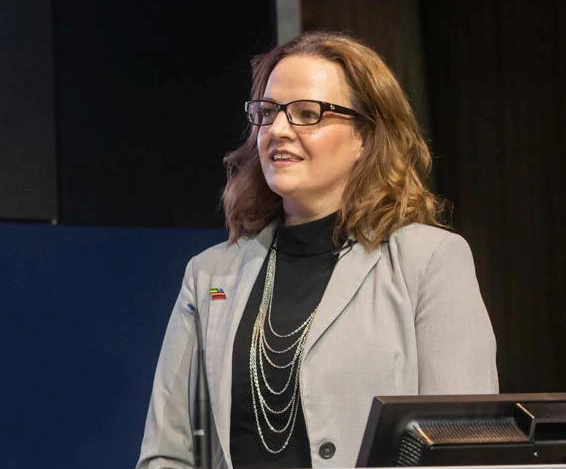Exclusive – Bank of America’s diversity chief urges City firms to ‘do more’ in 2021
The City of London and the government recently launched a joint taskforce in order to tackle the lack of class diversity in the UK’s financial services sector as it is often argued the Square Mile needs to do better at diversity and inclusion.
So will there be a step change in 2021? City A.M. sat down with St Paul’s-based Katy Ingle, head of diversity & inclusion at Bank of America.
What are your thoughts on the amount of progress that has been made in terms of gender equality in the City? For example, pay gaps still exist.
Looking at the City, the London Stock Exchange recently appointed Julia Hoggett as CEO. But even with this welcomed news, it would be naive to think we can now focus on other topics, many industries still have a long journey to improve gender equality. There’s enough evidence to demonstrate the detriment and the cost at which it comes. Seeing my daughter grow up, I want to make sure she has equal opportunities and that gender isn’t an issue in whatever she chooses to do.
“Many industries still have a long journey to improve gender equality.”

And in terms of racial equality, how has, for example, a movement like Black Lives Matter influenced your work?
This year’s intensified focus on racial equality and the impact that the coronavirus pandemic is having on Black, Asian and other minority communities has catalysed much needed action. Not just in the short term, but for the long term, building systemic and meaningful change. This is a movement, not a moment, and we must remain focused and do more to address the racial inequality that exists today.
So what does that mean in practice?
From a business perspective, we have broadened how we engage our teammates on the topics of race and inclusion. In the first half of the year alone, more than 165,000 of our employees participated in our internal ‘courageous conversations’ focused on topics like racial, social and economic injustices.
So how do you measure the success and impact of your diversity and inclusion initiatives?
At the bank, we have a long history of disclosing key workforce metrics and holding our management team accountable. As a business we use gender scorecards to provide detailed insight into representation, hiring and promotion. These scorecards can be cut across lines of business, country and legal entity, and allow for meaningful discussion and to determine plans with senior leaders, holding them accountable to influence and driving action across their teams.
“We use gender scorecards to provide detailed insight into representation, hiring and promotion at every level.”
What do you do when a regional or division head does not seem supportive of your diversity and inclusion proposals?
It’s not one size fits all, but a robust global strategy will consider intersectionality, individual needs and cultures. The endorsement needs to come from the very top, and organisations need to work collaboratively across the firm, ensuring there’s support at every level.
You are responsible for diversity efforts in Europe, as well as the Middle East and Africa. I take it there are many regional differences or obstacles.
Of course! No two people or countries are the same. A diversity & inclusion priority in Africa could be totally different to that of France or Germany. It can be complex – when looking at how we tailor our focus, we have to take into consideration the culture of the country, the diversity of our employees and other external factors, such as regulatory requirements. One way that we develop our approach is by working with external partners with local knowledge who help us identify and develop opportunities in the countries in which we operate.
“Women, Black, Asian, other minority ethnic and LGBT+ communities are having the toughest time through the pandemic.”
What are some of the most pressing issues that diversity and inclusion can help address?
The coronavirus is having a disproportionate impact on diverse people. Recent research from McKinsey found that globally, women, Black, Asian, other minority ethnic and LGBT+ communities are having the toughest time through the pandemic, both in the workplace, and with balancing work and home life.
Let’s stay with the Coronavirus pandemic for a minute.
Yes, it’s been quite the year! The pandemic brought its own unique set of challenges, with employees being impacted in a multitude of ways. From offering access to no-cost coronavirus testing to 24/7 counselling services, we expanded our existing benefits and adapted many of our programs, tools and initiatives to a virtual format. And for me, home schooling was definitely interesting; learning how to become a teacher overnight was a steep learning curve!